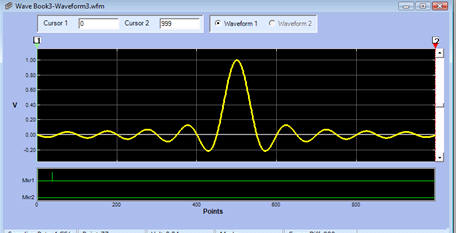| See the links on the left.
There literally are dozens of PC based data acquisition systems that use the serial
port to interface to the PC. Many of these may be used with programs written in any
Windows language, including Visual Basic® (my primary interest). Some
use proprietary protocols, and are meant to use applications that are furnished with the
hardware. While this second category is useful, I will not go into details on their
operation, though I will include links so that you can seek more information -- if this
strikes your fancy.
Systems that use serial interfaces range in performance from low, up to a few hundred
Hz, to fairly high, 100 KHz or higher are possible, if the system employs sufficient
memory to buffer all data acquired in real time. A simple calculation shows what raw
acquisition rate is the maximum that can be achieved by systems that must use the serial
port to send acquired data to the PC in real time. The maximum serial port speed for
normal 16550A UART based serial ports is 115 Kbits/s. This results in a raw maximum
real time acquisition rate of 11.5 K bytes/s. Practical implementations will
restrict this to 10 K bytes/s (or less), largely dependent on the capability of the PC
that hosts the application software. This is roughly an order of magnitude higher
performance than can be reached by most parallel port based devices (see Other Parallel).
(1/2014) I have been creating a
number of very inexpensive data acquisition projects that are based on
different Arduino platforms.
Arduino provides a very natural development environment and it can be
perfect for one-off or limited production test and measurement systems.
I have a number of Arduino examples in my book (see the next paragraph).
Many manufacturers of serial port based A/Ds provide ActiveX controls and/or C based
libraries for application programming. Those that are not furnished with programming
controls or libraries, and that don't implement a proprietary data format, can be
interfaced using the methods that I describe in my book,
Visual
Basic Programmer's Guide to Serial Communications. These can range
from the Data Logger example in my book that uses a DVM, to much higher performance
applications.
I have created an ActiveX control for B&B
Electronics 232SDA series of Data Acquisition Modules. Click this link
to go to my 232SDA page.
 Click here for a paper that
describes how to add waveform editing and creation for a Berkeley
Nucleonics Model 625/625A Arbitrary Waveform Generator. (NEW
April 5, 2010). This isn't data acquisition, per se.
However, it might be interesting due to its use of RS-232 to control an
external instrument, and it does have application to testing of various data
acquisition systems. Such testing is the reason that I wrote it. Click here for a paper that
describes how to add waveform editing and creation for a Berkeley
Nucleonics Model 625/625A Arbitrary Waveform Generator. (NEW
April 5, 2010). This isn't data acquisition, per se.
However, it might be interesting due to its use of RS-232 to control an
external instrument, and it does have application to testing of various data
acquisition systems. Such testing is the reason that I wrote it. |
![]()